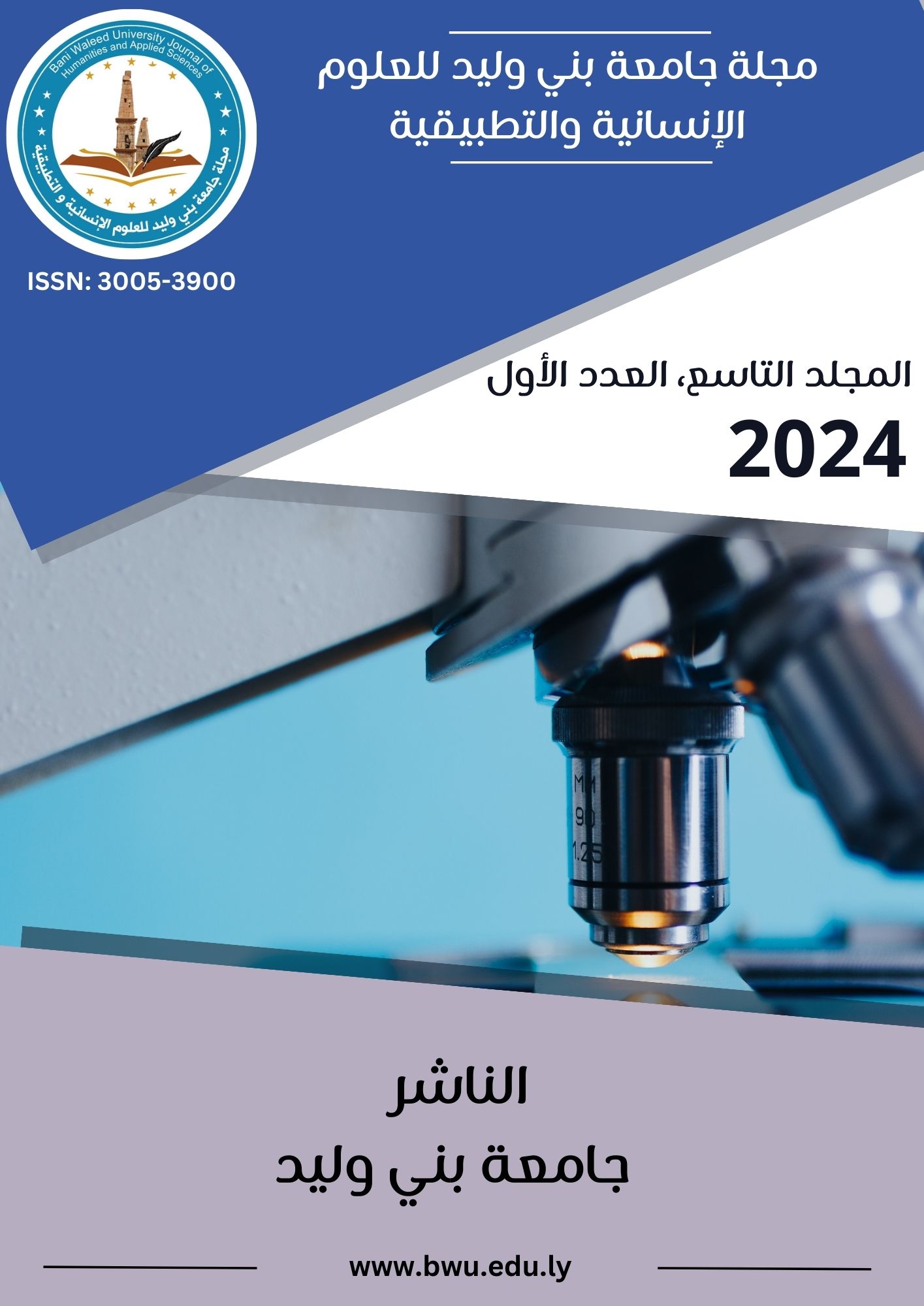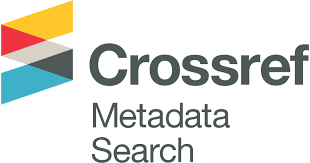Application of Differential Equations and Integrals on Structure of AI language model
DOI:
https://doi.org/10.58916/jhas.v9i1.209الكلمات المفتاحية:
AI - Differential – Equations – GPT-4 – Integral.الملخص
The study of AI language models, such as GPT-4, can be enhanced by applying differential equations and integrals. These methods provide a comprehensive understanding of the model's behavior, learning dynamics, and performance. By formulating appropriate partial differential equations (PDEs), ordinary differential equations (ODEs), and integral equations, researchers can identify patterns that contribute to the model's strengths and weaknesses. This information can be used to design more efficient training algorithms and improve the interpretability of the model. Partial Differential Equations (PDEs) are crucial in modeling the relationships between different elements within a sequence in AI language models. They capture the dynamics of the model, allowing researchers to analyze how it processes language and identify patterns that may contribute to its strengths and weaknesses. Ordinary Differential Equations (ODEs) play a crucial role in understanding the learning dynamics of AI language models, describing how the model's parameters change over time during training. Analyzing the stability of ODEs helps design more efficient training algorithms, leading to improved performance and better interpretability. Integral equations can be used to evaluate the performance of AI language models by calculating various performance metrics, such as perplexity, accuracy, or loss. Analyzing these metrics can help guide further improvements, ultimately leading to better performance and a more comprehensive understanding of natural language processing. Numerical methods, symbolic computation, and analytical solutions are essential in solving and analyzing formulated models, providing insights into the underlying mathematical structures and mechanisms. This knowledge can guide the design of more efficient and interpretable language models, leading to improved performance and a better understanding of natural language processing.
التنزيلات
المراجع
W. Wang and K. Siau, "Artificial intelligence, machine learning, automation, robotics, future of work and future of humanity: A review and research agenda," Journal of Database Management (JDM), vol. 30, pp. 61-79, 2019.
C. Rackauckas, Y. Ma, J. Martensen, C. Warner, K. Zubov, R. Supekar, et al., "Universal differential equations for scientific machine learning," arXiv preprint arXiv:2001.04385, 2020.
C. du Plooy and R. Oosthuizen, "AI usefulness in systems modelling and simulation: gpt-4 application," South African Journal of Industrial Engineering, vol. 34, pp. 286-303, 2023.
S. Hochreiter and J. Schmidhuber, "Long short-term memory," Neural computation, vol. 9, pp. 1735-1780, 1997.
W. C. Wong, E. Chee, J. Li, and X. Wang, "Recurrent neural network-based model predictive control for continuous pharmaceutical manufacturing," Mathematics, vol. 6, p. 242, 2018.
A. L. Caterini, D. E. Chang, A. L. Caterini, and D. E. Chang, "Recurrent neural networks," Deep neural networks in a mathematical framework, pp. 59-79, 2018.
E. Wigner, "The transition state method," Transactions of the Faraday Society, vol. 34, pp. 29-41, 1938.
A. Salaün, Y. Petetin, and F. Desbouvries, "Comparing the modeling powers of RNN and HMM," in 2019 18th ieee international conference on machine learning and applications (icmla), 2019, pp. 1496-1499.
S.-H. Noh, "Analysis of gradient vanishing of RNNs and performance comparison," Information, vol. 12, p. 442, 2021.
M. A. I. Sunny, M. M. S. Maswood, and A. G. Alharbi, "Deep learning-based stock price prediction using LSTM and bi-directional LSTM model," in 2020 2nd novel intelligent and leading emerging sciences conference (NILES), 2020, pp. 87-92.
F. Shahid, A. Zameer, and M. Muneeb, "A novel genetic LSTM model for wind power forecast," Energy, vol. 223, p. 120069, 2021.
K. A. Al-Utaibi, S. Siddiq, and S. M. Sait, "Stock Price forecasting with LSTM: A brief analysis of mathematics behind LSTM," Biophysical Reviews and Letters, pp. 1-14, 2023.
J. Van Der Westhuizen and J. Lasenby, "The unreasonable effectiveness of the forget gate," arXiv preprint arXiv:1804.04849, 2018.
K. Vijayaprabakaran and K. Sathiyamurthy, "Towards activation function search for long short-term model network: A differential evolution based approach," Journal of King Saud University-Computer and Information Sciences, vol. 34, pp. 2637-2650, 2022.
K. Yao, T. Cohn, K. Vylomova, K. Duh, and C. Dyer, "Depth-gated LSTM," arXiv preprint arXiv:1508.03790, 2015.
A. Pulver and S. Lyu, "LSTM with working memory," in 2017 International Joint Conference on Neural Networks (IJCNN), 2017, pp. 845-851.
F. Landi, L. Baraldi, M. Cornia, and R. Cucchiara, "Working memory connections for LSTM," Neural Networks, vol. 144, pp. 334-341, 2021.
P. Mei, C. Huang, D. Yang, S. Yang, F. Chen, and Q. Song, "A vehicle-cloud collaborative strategy for state of energy estimation based on CNN-LSTM networks," in 2022 2nd International Conference on Computers and Automation (CompAuto), 2022, pp. 128-132.
Z. Chang, Y. Zhang, and W. Chen, "Effective adam-optimized LSTM neural network for electricity price forecasting," in 2018 IEEE 9th international conference on software engineering and service science (ICSESS), 2018, pp. 245-248.
J. Hwang, "Modeling Financial Time Series using LSTM with Trainable Initial Hidden States," arXiv preprint arXiv:2007.06848, 2020.
I. Goodfellow, J. Pouget-Abadie, M. Mirza, B. Xu, D. Warde-Farley, S. Ozair, et al., "Generative adversarial networks," Communications of the ACM, vol. 63, pp. 139-144, 2020.
Z. Pan, W. Yu, X. Yi, A. Khan, F. Yuan, and Y. Zheng, "Recent progress on generative adversarial networks (GANs): A survey," IEEE access, vol. 7, pp. 36322-36333, 2019.
P. Manisha and S. Gujar, "Generative Adversarial Networks (GANs): What it can generate and What it cannot?," arXiv preprint arXiv:1804.00140, 2018.
D. Saxena and J. Cao, "Generative adversarial networks (GANs) challenges, solutions, and future directions," ACM Computing Surveys (CSUR), vol. 54, pp. 1-42, 2021.
P. Salehi, A. Chalechale, and M. Taghizadeh, "Generative adversarial networks (GANs): An overview of theoretical model, evaluation metrics, and recent developments," arXiv preprint arXiv:2005.13178, 2020.
T. Nguyen, T. Le, H. Vu, and D. Phung, "Dual discriminator generative adversarial nets," Advances in neural information processing systems, vol. 30, 2017.
V. Zadorozhnyy, Q. Cheng, and Q. Ye, "Adaptive weighted discriminator for training generative adversarial networks," in Proceedings of the IEEE/CVF Conference on Computer Vision and Pattern Recognition, 2021, pp. 4781-4790.
L. Gonog and Y. Zhou, "A review: generative adversarial networks," in 2019 14th IEEE conference on industrial electronics and applications (ICIEA), 2019, pp. 505-510.
H. Alqahtani, M. Kavakli-Thorne, and G. Kumar, "Applications of generative adversarial networks (gans): An updated review," Archives of Computational Methods in Engineering, vol. 28, pp. 525-552, 2021.
S. Porkodi, V. Sarada, V. Maik, and K. Gurushankar, "Generic image application using GANs (generative adversarial networks): a review," Evolving Systems, vol. 14, pp. 903-917, 2023.
A. Dash, J. Ye, and G. Wang, "A review of Generative Adversarial Networks (GANs) and its applications in a wide variety of disciplines: From Medical to Remote Sensing," IEEE Access, 2023.
B. Yilmaz and K. Ralf, "Understanding the mathematical background of Generative Adversarial Networks (GANs)," Mathematical Modelling and Numerical Simulation with Applications, vol. 3, pp. 234-255, 2023.
P. Lencastre, M. Gjersdal, L. R. Gorjão, A. Yazidi, and P. G. Lind, "Modern AI versus century-old mathematical models: How far can we go with generative adversarial networks to reproduce stochastic processes?," Physica D: Nonlinear Phenomena, vol. 453, p. 133831, 2023.
C. He, S. Huang, R. Cheng, K. C. Tan, and Y. Jin, "Evolutionary multiobjective optimization driven by generative adversarial networks (GANs)," IEEE transactions on cybernetics, vol. 51, pp. 3129-3142, 2020.
S. Asokan and C. S. Seelamantula, "Euler-Lagrange Analysis of Generative Adversarial Networks," Journal of Machine Learning Research, vol. 24, pp. 1-100, 2023.
A. Vaswani, N. Shazeer, N. Parmar, J. Uszkoreit, L. Jones, A. N. Gomez, et al., "Attention is all you need," Advances in neural information processing systems, vol. 30, 2017.
B. Ghojogh and A. Ghodsi, "Attention mechanism, transformers, BERT, and GPT: tutorial and survey," 2020.
J. Saha, D. Hazarika, N. B. Y. Gorla, and S. K. Panda, "Machine-learning-aided optimization framework for design of medium-voltage grid-connected solid-state transformers," IEEE Journal of Emerging and Selected Topics in Power Electronics, vol. 9, pp. 6886-6900, 2021.
A. Bryutkin, J. Huang, Z. Deng, G. Yang, C.-B. Schönlieb, and A. Aviles-Rivero, "HAMLET: Graph Transformer Neural Operator for Partial Differential Equations," arXiv preprint arXiv:2402.03541, 2024.
M. S. Alnæs, A. Logg, K. B. Ølgaard, M. E. Rognes, and G. N. Wells, "Unified form language: A domain-specific language for weak formulations of partial differential equations," ACM Transactions on Mathematical Software (TOMS), vol. 40, pp. 1-37, 2014.
L. Yang, S. Liu, T. Meng, and S. J. Osher, "In-context operator learning with data prompts for differential equation problems," Proceedings of the National Academy of Sciences, vol. 120, p. e2310142120, 2023.
K. C. Cheung and S. See, "Recent advance in machine learning for partial differential equation," CCF Transactions on High Performance Computing, vol. 3, pp. 298-310, 2021.
A. Clark and A. Evans, "Foundations of the Unified Modeling Language," in Proceedigs of the 2nd Northern Formal Methods Workshop., 1997.
N. Bouziani and D. A. Ham, "Escaping the abstraction: a foreign function interface for the Unified Form Language [UFL]," arXiv preprint arXiv:2111.00945, 2021.
X. Yang, A. Chen, N. PourNejatian, H. C. Shin, K. E. Smith, C. Parisien, et al., "Gatortron: A large clinical language model to unlock patient information from unstructured electronic health records," arXiv preprint arXiv:2203.03540, 2022.
G. P. Wellawatte and P. Schwaller, "Extracting human interpretable structure-property relationships in chemistry using XAI and large language models," arXiv preprint arXiv:2311.04047, 2023.
G. A. Katuka, S. Chakraburty, H. Lee, S. Dhama, T. Earle-Randell, M. Celepkolu, et al., "Integrating Natural Language Processing in Middle School Science Classrooms: An Experience Report," 2024.
M. Magill, "Opportunities for the Deep Neural Network Method of Solving Partial Differential Equations in the Computational Study of Biomolecules Driven Through Periodic Geometries," University of Ontario Institute of Technology, 2022.
N. Koceska, S. Koceski, L. K. Lazarova, M. Miteva, and B. Zlatanovska, "Can ChatGPT be used for solving ordinary differential equations," Balkan Journal of Applied Mathematics and Informatics, vol. 6, pp. 103-114, 2023.
A. Pyrkov, A. Aliper, D. Bezrukov, D. Podolskiy, F. Ren, and A. Zhavoronkov, "Complexity of life sciences in quantum and AI era," Wiley Interdisciplinary Reviews: Computational Molecular Science, vol. 14, p. e1701, 2024.
P. Agarwal, R. P. Agarwal, and M. Ruzhansky, Special functions and analysis of differential equations: CRC Press, 2020.
P. W. Thompson and T. Dreyfus, "A coherent approach to the Fundamental Theorem of Calculus using differentials," in Proceedings of the Conference on Didactics of Mathematics in Higher Education as a Scientific Discipline, 2017, pp. 354-358.
S.-B. Hsu and K.-C. Chen, Ordinary differential equations with applications vol. 23: World scientific, 2022.
K. Zhang, K. Zhang, M. Zhang, H. Zhao, Q. Liu, W. Wu, et al., "Incorporating dynamic semantics into pre-trained language model for aspect-based sentiment analysis," arXiv preprint arXiv:2203.16369, 2022.
J. L. McClelland, F. Hill, M. Rudolph, J. Baldridge, and H. Schütze, "Placing language in an integrated understanding system: Next steps toward human-level performance in neural language models," Proceedings of the National Academy of Sciences, vol. 117, pp. 25966-25974, 2020.
L. Wang, C. Ma, X. Feng, Z. Zhang, H. Yang, J. Zhang, et al., "A survey on large language model based autonomous agents," arXiv preprint arXiv:2308.11432, 2023.
J. Achiam, S. Adler, S. Agarwal, L. Ahmad, I. Akkaya, F. L. Aleman, et al., "Gpt-4 technical report," arXiv preprint arXiv:2303.08774, 2023.














